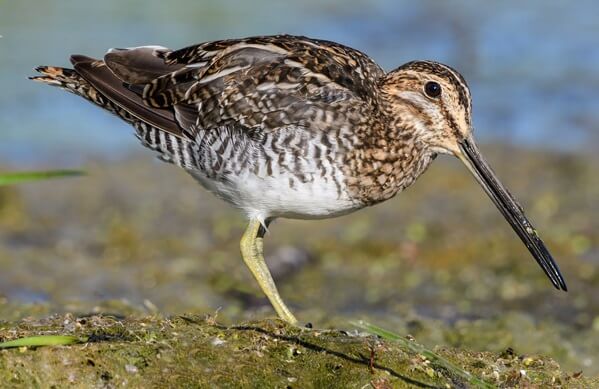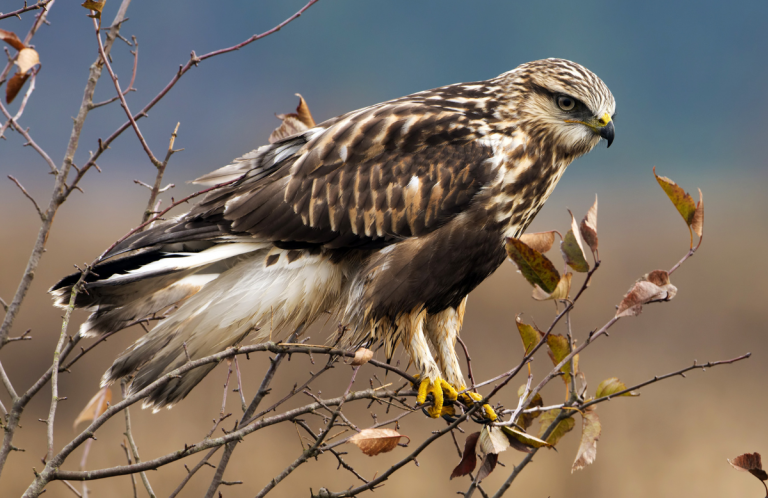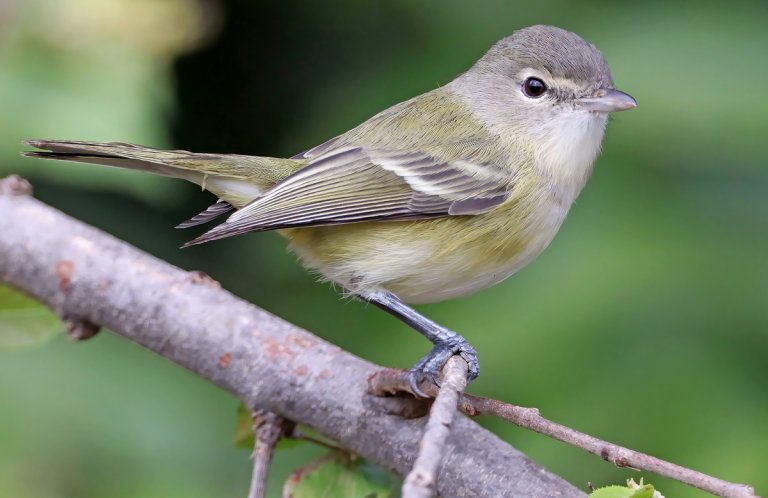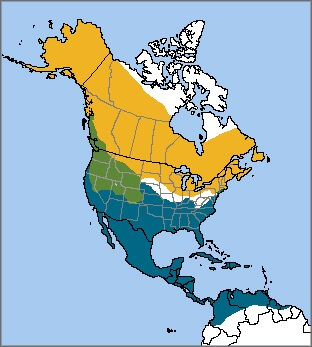 Wilson's Snipe, named for famed American ornithologist Alexander Wilson, is a plump, long-billed shorebird that, like American Woodcock and Mountain Plover, is often found far from shorelines.
Wilson's Snipe, named for famed American ornithologist Alexander Wilson, is a plump, long-billed shorebird that, like American Woodcock and Mountain Plover, is often found far from shorelines.
As this "Common Snipe" video indicates, Wilson's Snipe was once considered a subspecies of Common Snipe, an Old World species. Wilson's was recognized as a distinct species in 2003 based on number of tail feathers and other morphological and vocal differences.
The bird's stocky, top-heavy appearance is a result of extra-large pectoral muscles that give snipe the ability to explode into the air. Their fast, zig-zagging flight can reach 60 miles per hour and makes them prized by game hunters — so much so that the word "sniper," which originally referred to a snipe hunter, has become a term for a skilled shooter able to hit difficult targets.
Wilson's Snipe depend on freshwater wetlands throughout their life cycles, and habitat loss is the species' biggest threat. Collisions with communications towers and glass are another major problem for these birds.
Shy, Solitary Snipe
Snipe tend to be solitary and shy, avoiding notice by concealing themselves in ground-level vegetation during the day. Like woodcock, snipe are intricately patterned in buff and brown; this cryptic coloration provides excellent camouflage in the boggy fields these birds favor.
Woodcock and snipe also have eyes set far back on their heads, which gives them the ability to see behind them as well as in front and to the sides. This adaptation makes it difficult for a predator to take one by surprise.
Sign up for ABC's eNews to learn how you can help protect birds.
Bobbing for Invertebrates
While feeding, Wilson's Snipes methodically probe soft, muddy ground for earthworms, crustaceans, and other invertebrates, moving their heads up and down in a slow "sewing machine" motion. Their bills have flexible tips that can open to grab food while the bill is still buried in soil.
Snipe also occasionally eat small vertebrates such as lizards, frogs, fish, and even bird nestlings.
Dramatic Displays
Snipe are well known for their dramatic courtship displays, heard at night as the birds circle high over their territories. As they fly, air rushing over outspread tail feathers creates an eerie, whirring hu-hu-hu sound known as “winnowing.” Both sexes winnow as part of their courtship or to chase away potential predators, and males perform winnowing flights when advertising and defending their territories.
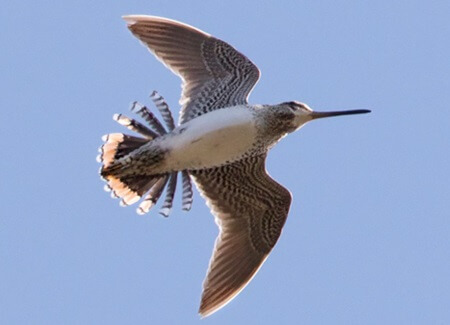
Wilson's Snipe display by Lars Petersson, www.larsfoto.se
When nesting, the female Wilson's Snipe makes several scrapes on the ground before selecting a site close to or even surrounded by water. Like many other shorebirds, such as Buff-breasted Sandpiper and Snowy Plover, a mother snipe with eggs or chicks will perform elaborate distraction to lead predators away from her nest.
Saving Wetland Habitats and Birds
Although Wilson's Snipe were once hunted extensively, they remain widespread and populations are stable, although wetland degradation and loss continue.
To counter this loss of essential bird habitat, American Bird Conservancy created the BirdScapes approach to migratory bird conservation. Through BirdScapes, we're working with partners to conserve essential breeding, wintering, and stopover habitats that benefit birds from Olive-sided Flycatcher to Blackpoll Warbler.
We also offer many solutions to the problem of bird collisions with glass, which kill millions of birds each year in the United States alone.
Donate to support ABC's conservation mission!





































